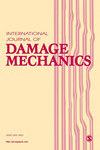利用数字图像相关计算应变数据提取退役12% Cr钢蠕变损伤参数
IF 4
2区 工程技术
Q2 MATERIALS SCIENCE, MULTIDISCIPLINARY
引用次数: 0
摘要
一些连续损伤力学(CDM)模型方法用于预测回火铁素体钢的蠕变变形已经在文献中发展起来,这些方法是从努力扩展电厂部件的可操作性发展而来的。然而,这些模型很少通过损伤参数的提取来对电厂钢退役状态进行损伤评估。此外,很少有CDM方法利用通过数字图像相关(DIC)等全场应变测量技术获得的高密度蠕变曲线数据。本工作使用了从X20CrMoV12-1 (X20)管道钢的单个试样中获得的DIC计算应变数据在几种应力和温度下的多重蠕变曲线。这些曲线作为输入数据,用于改进的Oruganti连续损伤力学(CDM)模型,从而可以提取微结构特定的损伤参数。cdm提取的参数与显微组织、蠕变空洞密度和硬度损伤指标吻合较好。基于亚晶生长的损伤参数对X20钢的退役状态尤为敏感。本文提出的基于DIC计算蠕变曲线的CDM方法是传统退役材料损伤评估方法的有效替代方法。本文章由计算机程序翻译,如有差异,请以英文原文为准。
Creep damage parameter extraction from ex-service 12% Cr steel using digital image correlation computed strain data
Several continuum damage mechanics (CDM) modelling approaches for predicting creep deformation of tempered ferritic steels have been developed in the literature, which have evolved from efforts to extend the operability of power plant components. Few of these models, however, focus on damage assessment of ex-service states of power plant steels through the extraction of damage parameters. Furthermore, few CDM approaches leverage the high density of creep curve data available through full-field strain measurement techniques such as digital image correlation (DIC). This work uses multiple creep curves obtained from DIC computed strain data at several stresses and temperatures from individual specimens of X20CrMoV12-1 (X20) piping steel. These curves serve as input data to a modified Oruganti continuum damage mechanics (CDM) model whereby microstructural-specific damage parameters can be extracted. Good agreement is noted between CDM-extracted parameters and microstructural, creep cavity density and hardness damage indicators. Damage parameters based on subgrain growth are particularly sensitive to the ex-service state of the X20 steel. The proposed CDM approach using DIC computed creep curves is shown to be a material efficient alternative to traditional damage assessment methods of ex-service material.
求助全文
通过发布文献求助,成功后即可免费获取论文全文。
去求助
来源期刊

International Journal of Damage Mechanics
工程技术-材料科学:综合
CiteScore
8.70
自引率
26.20%
发文量
48
审稿时长
5.4 months
期刊介绍:
Featuring original, peer-reviewed papers by leading specialists from around the world, the International Journal of Damage Mechanics covers new developments in the science and engineering of fracture and damage mechanics.
Devoted to the prompt publication of original papers reporting the results of experimental or theoretical work on any aspect of research in the mechanics of fracture and damage assessment, the journal provides an effective mechanism to disseminate information not only within the research community but also between the reseach laboratory and industrial design department.
The journal also promotes and contributes to development of the concept of damage mechanics. This journal is a member of the Committee on Publication Ethics (COPE).
 求助内容:
求助内容: 应助结果提醒方式:
应助结果提醒方式:


